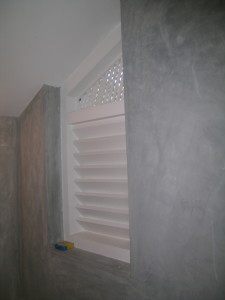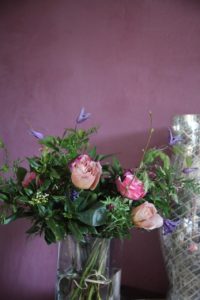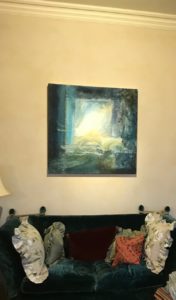Brushed paint forming a thin layer over the previous coat – the new layer is uneven, so the effect created is tonal, the brush marks are left to show. But, and this is important, colour washing – for me – is a process of layering not a technique. It always looks best, far more sophisticated without high definition between colours and brush marks. Colours are generally pale but as shown here can also be intense.
My own sitting room, and very definitely a colour …
Originally from the essential white washing, when lime was painted – brushed over – the adobe, cob or lime plaster beneath, both to cover and to put off bugs and insects. On these surfaces lime both dries and absorbs into the material beneath at varying rates, so the result always has the movement of natural variation.
The coats of paint are thin, watery, so several are needed. Colour washing is the coloured version of lime washing using natural pigments -for which the local soil or ground, earth colour was used. Hence the rich terracottas and soft yellows to soft pinks and greens that we see in pigment rich areas such as Tuscany and Provence.
A clients home and as yet incomplete project using raw sienna and raw umber in layers, with a tiny drop of parchment in the top coat to retain a slightly chalky look.
The only key to managing the plentiful colours that we buy, is not to choose too wide a disparity between the base coat and the top coat. Colour washing always works best tonally, allowing the material and pigment to sing their own song..

This one from a room in Kandalama, Sri Lanka by architect Geoffrey Bawa shows colour washed – probably lime washed walls with a jalousie window for natural ventilation.


